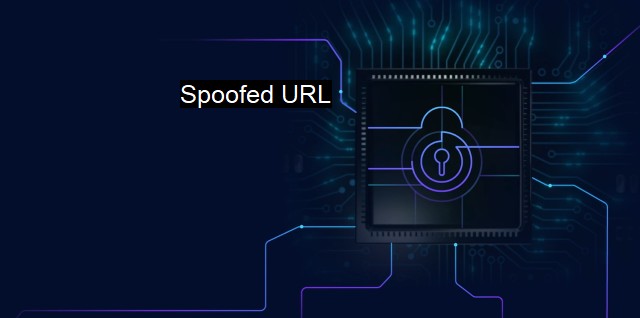What is Spoofed URL?
The Rise of Spoofed URLs: Understanding the Threat and How to Protect Yourself
In the evolving world of cybersecurity, the rise of deceptive techniques to carry out internet scams or cyberattacks is no less than an alarming issue. One such deceptive technique utilized by cybercriminals involves "Spoofed URLs".A "Spoofed URL", also known as URL spoofing or website spoofing, is a malicious technique that tampers with and manipulates the uniform resource locator (URL) to mislead users to a semi-identical imitation of the intended website. The main objective of these cyber scoundrels is to delude the user into revealing their confidential and sensitive information unknowingly such as login credentials, credit card details, or other personal data.
Above and beyond commanding illicit access to sensitive data, spoofed URLs also serve as conduits for injecting malware into the user's system. All these illegal approaches are formatted so meticulously that it is often hard for an average user to differentiate between the genuine and spoofed site.
Exemplifying this, the most common trick applied by cybercriminals is cloning or mirroring the real site to create an identical or visually similar URL. They might switch a single letter or a number or include symbols like hyphens that usually go unnoticed. with the toughness of distinguishing between sophisticated homoglyph characters of both Cyrillic and Latin scripts, users can easily fall prey to these scams. For instance, the difference between the Roman "a" and the Cyrillic "а" can cast many users off guard.
Yet, these attackers don’t stop here. IP (Internet Protocol) address spoofing is another deceitful tactic used, especially for launching Distributed Denial-of-Service (DDoS) attacks. Here the hacker alters the source IP address in packet headers to hide the identity of the source or to impersonate other computing systems. In the context of URL spoofing, IP address spoofing can misdirect users to a fraudulent website when they type in the correct URL.
Even though the techniques employed by malicious entities are incredibly sophisticated, several cybersecurity measures can be used to protect oneself from falling victim to such fraudulent activities. One of the fundamental security measures that help immensely is to keep an eye on the URL. Checking the URL meticulously before typing in sensitive data is an effective measure. Always remember that a legitimate site will always start with 'https://' stating that it's secure and authentic.
Using antivirus software is another effective method. This software scans and blocks fraudulent websites, thereby diverting the user away from potential threats. Enabled features like phishing filters or fraudulent website warning are other important features offered in antivirus software to detect and avoid spoofed URLs.
Using two-factor authentication (2FA) wherever feasible can serve as an additional stratum of security. Even if the attacker deceives you into giving away your login credentials, they can't trespass further without the second authentication factor.
Regular updating of the operating system and web browser also assists in safeguarding from spoofed URLs and associated cyberattacks. This is because these updates often come with improved security features and patches for vulnerabilities that might be exploited otherwise.
To sum up, a Spoofed URL is an overwhelming threat to cybersecurity and unswerving caution from the user's end and using reliable antivirus software can help mitigate the associated risks. It's the electronic version of ‘stranger danger’ – always observing and verifying the websites one visits is crucial. Cybersecurity is not just about having high-level security measures but also about practicing good netiquette and web surfing practices to maintain a safe and secure cyber experience.

Spoofed URL FAQs
What is a spoofed URL in cybersecurity?
A spoofed URL is a type of cyber attack where the attacker creates a fake website that looks identical to a legitimate one, with the intention of stealing sensitive information from unsuspecting users.What are the dangers of clicking on a spoofed URL?
Clicking on a spoofed URL can lead to various types of cyber attacks, including malware infections, phishing scams, and identity theft. These attacks can result in significant financial losses and damage to personal or business reputation.Can antivirus software protect against spoofed URLs?
Antivirus software can help protect against some types of spoofed URLs by detecting and blocking known malicious URL patterns. However, it is not foolproof, and users should always exercise caution when clicking on links and double-check the URL before entering any sensitive information.How can I avoid falling victim to a spoofed URL attack?
To avoid falling victim to a spoofed URL attack, it is essential to always double-check the URL before clicking on any links. Look for spelling errors or slight variations in the URL that may indicate a fake website. Also, keep your antivirus software up-to-date and be wary of any unsolicited emails or messages that ask for personal information.| | A | | | B | | | C | | | D | | | E | | | F | | | G | | | H | | | I | | | J | | | K | | | L | | | M | |
| | N | | | O | | | P | | | Q | | | R | | | S | | | T | | | U | | | V | | | W | | | X | | | Y | | | Z | |
| | 1 | | | 2 | | | 3 | | | 4 | | | 7 | | | 8 | | |||||||